page 15
Progressive Thinkers as of 5/8/2020
|
| ||||||||||||||||||||||||||||||||||||||||||||||||||||||||||||||||||||||||||||||||||||||||||||||||||||||||||||||||||||||||||||||||||||||||||||||||||||||
Whereas humanity has an infinity of numbers at its disposal, only a very few are being used again and again. Whether it be in the description of Natural laws, the numbers used on sports jerseys, or the quantity of Natural disasters, what we see is a very small subset of enumeration taking place. Indeed, we see a 1- 2- 3 number arrangement in the human life span. Whereas some people die during a young age (1-9), others die later on (10-99), and a few die with a three-number age (100-127...). But let me state it plainly: Something appears to be forcing us to use only a small set of numbers to identify, catalogue and analyze all the things humanity has an interest in. For example, many scientific studies use three subjects, or there are three trials; or we standardize the usage of three Olympic medals, or develop a 3-strikes law that is thought by many to be fashioned by way of an analogy to baseball's 3-strike rule, or use three drugs to effect the idea of lethal injection:
The execution of the condemned in most (U.S.) states involves three separate injections (in sequential order):
- Sodium thiopental or pentobarbital ultra-short-action barbiturate, an anesthetic agent used at a high dose that renders the person unconscious in less than 30 seconds. Depression of respiratory activity is one of the characteristic actions of this drug. Consequently, the lethal-injection doses, will... even in the absence of the following two drugs, cause death due to lack of breathing, as happens with overdoses of opioids.
- Pancuronium bromide: non-depolarizing muscle relaxant, which causes complete, fast, and sustained paralysis of the striated skeletal muscles, including the diaphragm and the rest of the respiratory muscles; this would eventually cause death by asphyxiation.
- Potassium chloride: a potassium salt, which increases the blood and cardiac concentration of potassium to stop the heart via an abnormal heartbeat and thus cause death by cardiac arrest.
Apparently, there is a "conservation of number"(s) being used in every single subject you may care to examine, but this idea has not been established as a "Law" similarly noted as those conservation of energy laws routinely observed in physics... such as the three-part mass-to-energy equivalency formula (E = M X C2) cited by Einstein. However, though we might be inclined to consider the recurrence of a conservation of number (usage) as a law of (at least human) nature, the idea of a "Natural Law" is viewed differently than a "Law Of Nature", yet in both cases human interpretation and resulting definitions come into play. Generally speaking, a Natural law deals with morals and Ethics involving precedents for human conduct such as in the case for civil and criminal law as well as social mores and attitudes. While a Law of Nature is assigned to phenomena occurring in nature other than human activity; even though human activity can play a role in affecting/effecting perceived consistencies in Nature. In both cases concerning Natural and Nature laws, humans are involved in developing the criteria for establishing the differences. In this instance, the words "Nature and Natural" just like "Nature and Nurture" are differentiated though the words exhibit a similarity of basic referencing. In short, it can be viewed as a digression into semantics.
When speaking of energy and as is often the case in military terms, one may think of explosive power, the conservation of energy also implies a conservation of the amount of explosive/implosive force which can be yielded. While some may be overwhelmed or awe struck upon seeing images of a nuculear explosion or even planetary/galactic levels expressed in illustrative approximations, there nonetheless exists a conservation. Similarly, the idea/object many refer to as (a) god, must necessarily have a conservation as well. Hence, the word "unlimited" when ascribed to the god entity is much in the manner of a primitive's accounting measure exceeding two and frequently labeled as "Many".
With respect to the idea of a "conservation of number" typically framed for a mathematical context where children are taught that despite changes in size, color, arrangement, etc., the quantity remains the same. A child is taught to "see through the noise" of individual characteristics and apprehend a w-holistic perspective dealing simply with quantity to be defined as a set or group... such as a group of 2, group of 3, group of 4, etc... It is a concrete way of perception identified in the old Piagetian Stages of Cognitive development listed as the third stage, in what can be described as four stages of a 3 -to- 1 ratio of stages as a cognitive structure seen in multiple other contexts.
Later on involving what is sometimes termed higher or more advanced mathematics, we see mathematicians assigning individualized properties to numbers, symbols and even whole equations (such as being named after a person), in an effort to establish some imagined new formulaic-derived insight. Hence, the usage of words like "color and strange" to label individualized characteristics in particle physics one might alternatively describe as "personality" involving "interactions" similar to ideas which are entertained by Sociologists and Anthropologists studying human interactions.
In short, I believe this behavior of using a conservation of number to identify and label different perceptions to be a survival mechanism that biology (and human thinking processes) have adopted in response to three incremental environmental deteriorations that life is forced to accommodate; resulting in cultural, societal and personal behaviors (such as idea formation) which may otherwise be termed rationalizations... already seen in business, politics and religion, not to mention science and mathematics as well. (The three deteriorations may be simply described as 1) The Sun is burning out, 2) the Earth's rotation is slowing, 3) the Moon is receding.) Needless to say, these three events are contributing to changes in the Earth's environment to affect resource types and quantities... just as is human population growth and the problems which transpire.
While those who argue against the ubiquity of "three" having more significance than any other number pattern (to which they may provide numerous examples such as in the case of a type of Yin/Yang model), it is difficult for me to supply some other number-referenced pattern such as "2" or "7" (etc.) as being more persuasively prevalent, when I find such important distinctions as:
- Life as we know it occurs prominently (and so far) (predominantly) on the 3rd planet in this solar system. (For example, see: Among Trillions of Planets, Are We 'Home Alone?' by Pat Brennan, Sept. 22, 2020)... Then again, are we on the third planet or only think we are because human perception not only is upside down with respect to the structure of human vision processes, but also engages in various illusions and/or delusions?
- Basic biological constituents such as DNA and RNA have a triplet code. (See for example: The Triplet Code)
- There is a recurrence of patterns-of-three in particle physics. (For example, see these references:)
- Nature Seems to Love the Number Three by Mark Mahin, Jan. 31st, 2014
- Why Do Matter Particles Come in Threes? by Charlie Wood, March 30th 2020.
- Physicists Prove Surprising Rule of Threes by Natalie Wolchover, May 29, 2014 11:54 AM
Here is one individual's list of threes placed as a comment in response to the query "What comes in threes in Nature?", as an indication others than myself have pondered the same question from individualized perspectives attached with a given type of cataloguing (to which I'll add that the human brain is said to weigh about 3 pounds: Brain Weight, Brain Length, and Intelligence by Kendra Cherry, May 17, 2022). The list was compiled by Peter Seymour:
- The three basic stages of existence, -Birth Life and Death.
- Family, -Mother, Father and Child.
- Necessities, -Warmth, Sustenance and Shelter.
- Pregnancy, -3 months x 3.
- Average human height, 3 times head circumference.
- Animal Movement, -Forwards, Backwards and Sideways.
- Choice, -For, Against and Neutral.
- Survival, - Attack, Stand and Fight, or Flight.
- Work, Eat, and Sleep. (H.O.B. note: one might call this an occupation routine.)
- Demean, -Aggressive, Mild and Timid.
- Form,-Fat, Average and Thin.
- Size, Big, Medium and Small.
- Weather, -Cold, Hot and Mild.
- Time,- Morning Noon and Night. / -also Past, Present and Future.
- Bachelor’s Philosophy,- Find ‘em, F**k ’em and Forget ‘em.
- Possession, -Taking, Keeping and Giving.
- Elements, -Sun, Wind and Rain.
- Art, to please, to entertain or to shock?
One must ask why Nature has (apparently) stopped counting into the realm of higher numbers, and perhaps even expressed complex forms, formulas and formulations. If (for example) biology is a representation of Evolution, then why hasn't life evolved to produce a quadruplet, or quintuplet, or sextuplet, or septuplet, or octuplet, etc., system for DNA and RNA? And though some may want to emphasize a "four" system with protein labeling such as primary- secondary- tertiary- quaternary structures, we can just as well describe this as a three -to- one ratio from a different perspective. Indeed, while some biologists emphasize the usage of a "two" when it comes to cellular structure by labeling cells having a "Bi-lipid" layer, previous excursions into this observational realm referred to the cellular structure as being "Tri-laminar". In a manner of speaking, both perspectives are right, depending on what one wants to give distinction to. Using a word label which does not include a reference to quantity does not remove the presence of the quantity. The "Bi-lipid" layering label simply does not count the layer sandwiched between them. Yet, instead of using a given number such as 2, 3, or 4, some observations are inclined to use the wording such as the "fluid mosaic model", where there are either three components of a cell (protein, lipid, and carbohydrate) or four components (phospholipids, cholesterol, proteins, and carbohydrates), or some other quantity which is not emphasized in the name of a cell membrane model. Nonetheless, a conservation of number is being used, whether or not one references perceptions and ideas with words and/or numbers.
- Human anatomy is replete with patterns-of-three: List of Threes in Anatomy by Dr. John McNulty and Associates.
- Complex animal life forms come from three Germ layers (called Triploblastic), less complex life forms come from less than three 9Called
Diploblastic (for two layers) or "Monoploblastic" (for one layer) [I couldn't readily find the "Monoploblastic" term years ago, so I adopted it since
"mono" was a prefix seen elsewhere such as philosophy].
- "Monoploblastic" (one Germ layer): Though controversial, Sponges are said by some researchers to have one germ layer, other researchers say two germ layers.
- "Diploblastic" (two Germ layers): Cnidarians (such as Jelly fish and Hydra). In this paper, Sea Anemones are said to have three Germ layers instead of two: Cnidarians layer up by Tamar Hashimshony. (Thus suggesting a more complex physiology then other Cnidarians.)
- "Triploblastic" (three Germ layers): animals from earthworms to humans.
- The human brain sometimes gets a tripartite referenced (2-3-4) ensemble configuration of:
- 2 brain (left/right) hemispheres
- 3 (Triune) brain configuration such as (brainstem, the limbic system, and the cortex... or the reptilian- old mammal- new mammal structures) [see for example: Triune Brain]
- 4 quadrants division: (Logical- Organized- Emotional- Holistic) [see for example: Whole Brain Thinking]
For other 2-3-4 configurations, see: Devil's Advocate, page 14. Let us also note that an additional (higher than "three") enumeration of the brain takes place by altering the labels employed in describing different aspects of the brain such as "structures, parts, and functions", which can be viewed from different perspectives of interest. Yet, in all our efforts of enumeration, let us again emphasize the conserved nature of our patterning, contrasted against the infinity of numbers available to us.
One might say that not only humans, but various configurations of "Nature" (perceived by humans on Earth), are inclined towards some model of
triangulated thinking. Here is a perspective which succinctly illustrates the idea of triangular thinking as a cognitive activity that many people engage
in, but may be (for the most part) oblivious to such a recurring behavioral paradigm:
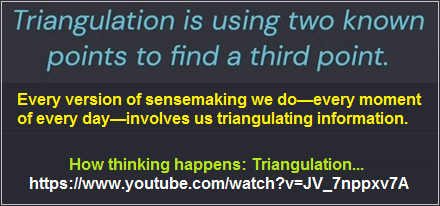
How Thinking Happens: Triangulation
While we can find multiple instances of other number-assigned patterns in biology, physics, chemistry, etc., patterns-of-three are heavily represented in multiple instances. We do not find ourselves on the 2nd nor 7th (etc.) planet. We do not find a "7-code" being used in DNA and RNA, and nor do we find a recurring "7" pattern in physics. In several instances I do find a 1- 2- 3 developmental scenario, but that such a scenario may not always be completed, whereby less-than-three are encountered and such instances may at times suggest a regression backwards from a "three". No less, overlapping developmental instances can provide us with occasion for observing 3-in-1 representations not limited to natural forms. Ideological expressions of such a pattern can well be illustrative of environmental pressures. (Take for example multiple pantheons of gods in a triple formula or the 3 persons in 1 god concept of some Christians. If we refer to the frequently cited primitive counting sequence of "One- Two- Many", then the word "Many" in the third position suggests the U.S. government motto of "E pluribus unum" [out of many, one], is another 3 -to- 1 ratio expression.
At this point let me interject a note about the 3 -to- 1 ratio and the standard reference of "threes" in fairytales. It is common for many people who have observed the recurrence of patterns in fairytales/nursery rhymes (and other types of literature) to make note of the recurrence of "threes" such as for example:
- The three bears (Papa, Momma, Baby)... Goldilocks
- Three Billy Goats Gruff (Large, Medium, Small sizes)... Troll
- Cinderella and her two sisters (Cinderella, Anastasia, Drizella)... and the Prince (as well as the Mother and Fairy Godmother)
- In the Cinderella story we also have a 1 -2- 3 ensemble (set) in the sense of 1 Prince, 2 Mothers, 3 Sisters.
- Old King Cole and his fiddlers three
- Three blind mice... and the farmer's wife
- Here are some other three-patterned references for childhood: BTR Poster 4th column
I submit that the conventional "three" pattern described by different authors who analyze patterns in stories (etc.), need to look again at the examples they have been giving readers (and were given by instructors as well as other authors), in order to recognize that we are dealing with a pattern that is not a "four" but a 3 -to- 1 ratio. It is a ratio that can be found in multiple other subjects. We need to identify if the 3 -to- 1 ratio compilation in the story line is a later edition that may have been discounted. If it is a later edition, we may be paying witness to an overlooked developmental cognitive trend occurring in a wide spectrum of thinking about different subjects.
One of the over-looked conventions of Fairytales and other literary forms is the presence of an outline that we can describe as a mathematical formula more easily portrayed in colloquial terms as a (mathematical) story problem. Stories frequently display the characteristic dichotomies seen in Mathematics as well as requiring a solution to a problem. Such dichotomies as good/evil, right/wrong, rich/poor, free/captive, etc., can be related to one or another math dichotomies such as positive/negative, rational/irrational, real/imaginary, etc... Whereas we describe stories as (mathematical) story problems, one can invert this and say that mathematical formulas are stories being told in cryptic ways (like stories in a foreign language). In this latter perspective, the field(s) of mathematics can be analogous to a book of (Grimm's brothers) fairytales, and/or myths (Dumezilian and otherwise), and or fables, and/or crime drama, and/or romance (novelettes- novellas- novels etc...
Far too often the correlation between the idea of Fairytales and Mathematics is used in the sense that teachers employ Fairytale-like characters and (simple) themes to assist in the development of thinking in mathematical terms for the mind of children. They are not actually de-constructing fairytales into math problems, but creating some fairytale-like idea in an effort to help children best grasp a given mathematical concept. Nonetheless, Fairytales and other stories can be de-constructed into mathematical formulas to display the underlying cognitive patterning being used in literature. Instead of using numbers, the quality of numbers and mathematical interactions takes place with words. It is a puzzle no one to my knowledge has worked out to present us with an image thereof. While it is far easier to construct a math concept into a fairytale-like theme, the obverse is not so easy because it is like being confronted by a mathematician who may be using a personalized model of mathematics formula creation to express cognitive behavior.
Here is a small sampling of resources for "threes" in fairytales (etc...):
- The Power of Three: Why Fairy Tales Often Feature a Triple
- Rule Of Three / Fairy Tales
- Two Plus One is Greater than Three: The Presence of the Number 3 in Fairytales and Folklore by K. Sean Buvala, Dec. 29, 2017
- Significance of the number 3 in fairy tales
- The Rule of Three (the role played in stories by numbers)
- Yes, there are different types of patterns to be culled from stories, tales, rhymes, etc., referred to as "conventions". Here is an example: (Features of a Fairy Tale)
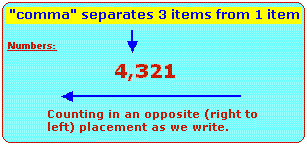
As an analogy to the 3 -to- 1 ratio that can be seen in Fairytales, Myths, etc., which very often are discussed in terms of a recurring "three" pattern, let us note the ratio as a cognitive counting expression with a parallel to place value notation in mathematics, written from right to left (like some middle Eastern writing habit). In this type of thinking taught to millions of people both in and out of public school, the convention is to place a comma after a set of three place values such that we have ones- tens- hundreds- (comma) thousands. Some may want to refer to this as a 4-number grouping, but I label it as a 3 -to- 1 ratio as a means of assisting in practicing differentiated thought processing. We separate three by using a comma to differentiate what can become another set of three (the 3 thousands values)... and so on.
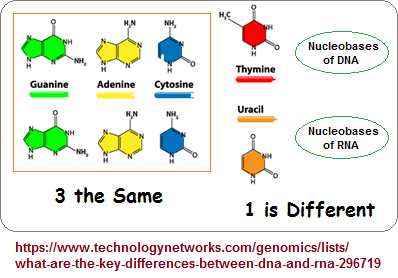
Another example of the 3 -to- 1 ratio is seen in the line up of Amino acids used to illustrate DNA and RNA. While both of them have Adenosine- Cytosine- Guanine, each of them is differentiated by the amino acids Thymine (for DNA) and Uracil (for RNA). In this sense we might want to view the scenario as an expression of Nature exercising a type of counting system and should not be so strange for human consciousness to consider as a possibility since many people already think that animals and insects (if not plants and all life forms) have some rudimentary counting system.
The word "standard" in the present usage on this page in no way means I am alternatively using the words "specifically" or "solely". In other words I am not saying "Specific Cognitive Model" nor "Sole Cognitive Model". There are multiple other patterns which may be used as a standard in different contexts either with a short term, long-term or intermittent presence. While some may argue for the presence of other patterns attached to these examples, they do not then also compile the differences into a workable ensemble. For example: DNA has a double helix, triplet code, and 4-bases. Hence, we see a three-patterned 2-3-4 ensemble. If we then compare this with RNA to highlight the presence of Uracil as opposed to Thymine, we thus find we have three amino acids which are alike (adenosine- cytosine- guanine) and 1 (each) amino acid which is different (DNA = Thymine, RNA = Uracil); giving us what I have labeled as a three-to-one ratio. It is a ratio which is seen in Mendelian genetics as well. (See for example: Mendel's Genetics). Other examples can be found here: Three to One ratios (From multiple subjects.)
- adenosine- cytosine- guanine + uracil (RNA = 1 strand)... {3 to 1 ratio}
- adenosine- cytosine- guanine + thymine (DNA = 2 strands)... {3 to 1 ratio}
- Hypothetical evolutionary development: [
- adenosine?- cytosine?- guanine? + ??? (tribose nucleic acid? = 3 strands)]
- 4 strands? 5 strands? 6 strands, etc... must a doubling always occur? Thus, single stranded RNA is a doubling of an earlier precursor?
It is necessary to point out that I too sometimes encounter an absence of the "three" pattern when confronting the presence of another pattern such as "2", variously described as pairs, opposites, complimentarities, dichotomies, dualities, etc... And yes, I am aware of patterns such as a recurrence of five fingers and toes, the octet rule in chemistry, Binary star systems, and other seemingly non-three expressions. And yet, even when those who practice a day-to-day interest in numbers (Mathematicians, Numerologists, Astrologists, etc...) come to reference alternative patterns to a presented "three" idea, they do not also come to explicitly state that when taken as a whole, we humans (and "mother" nature) are using only a very small subset of numbers (translated into patterns) compared to the infinity of numbers at our disposal. This conservation of number usage is not being viewed as a law of nature or law of human cognitivity.
Whereas humans describe a Conservation of Energy, Conservation of Momentum, Conservation of Mass, Conservation of Charge, etc., no one has proposed a Conservation of Cognitive patterning. Humans tend not to think they are limited or if there is some form of limitation, someone will figure out a way to get around it. Whereas some like the idea of Conservation laws (like a person collecting all the corner and edge pieces to a puzzle before assembling), others do not like the idea of being limited... particularly not when it comes to that which we call imagination. (An example of the Conservation Laws idea can be found here: Conservation law).
My view is that the incremental deterioration of the planet, solar system (etc.), is requiring life forms to adopt a conservation of number usage (quantity... and thus also quality), as a survival mechanism for physiological and psychological processes which are being forced to ride the wave of incremental deterioration. This requirement can thus be termed an act of rationalization as we adjust ourselves to the ongoing deterioration as a survival mechanism. We see multiple instances of rationalization taking place in religion, politics, social policies, education, sports, etc...

Beauty of Three
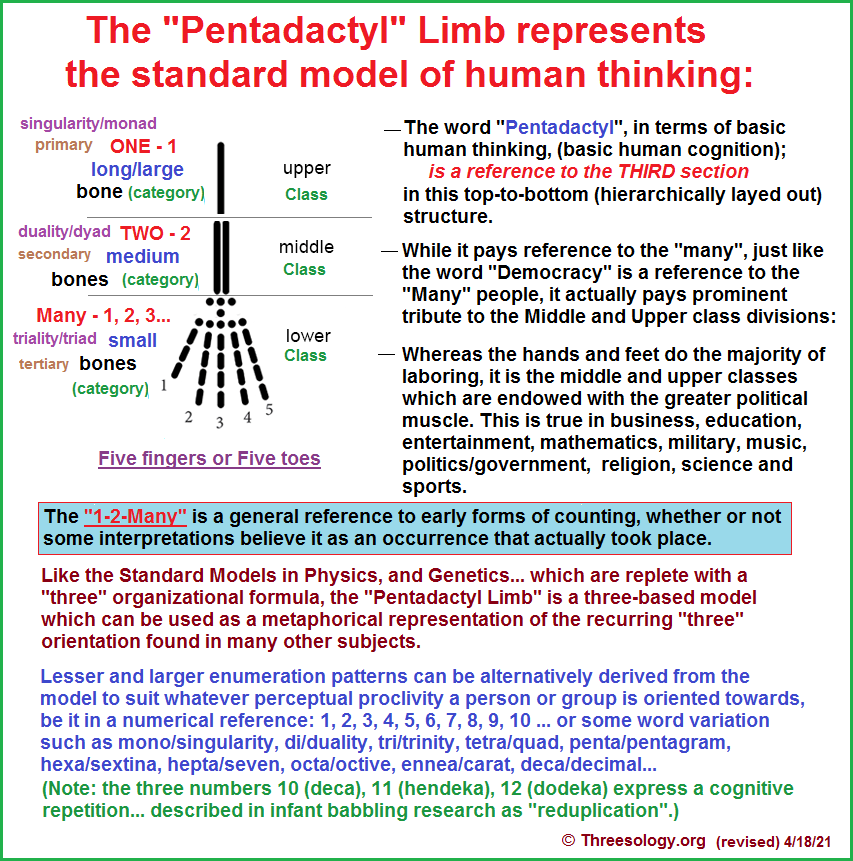
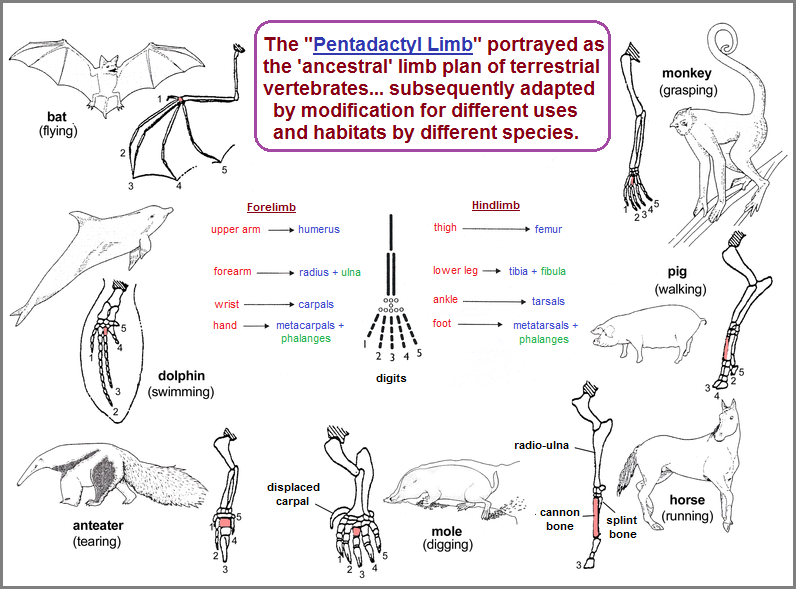
The "Standard Cognitive Model" can alternatively be described as a standard architectural pattern, so long as one remains flexible in making allowances for variability, just as biologists do when confronting different life forms; while at the same time identify a basic body plan (bauplan) which some may describe as a chassis, frame, blueprint or scaffolding upon which developmental biology exercises a bit of creative licensing to indulge in the attempted practice of exploration brought about by pressures, depressions, and ride-alongs (like a leaf meandering along the course of a flowing creek), from which emerges species-specific adaptations to one or another given environment... where nutrients used by a life form to preserve, decrease or increase a particular biological process which may or may not confer a developmentally advantageous attribute.
All of us... apparently, have the ability to reduce perceptions into common forms and formulas of processed representations. (I say "apparently" because I do not know everyone and I am guessing that the human brain reacts similarly to environmental cues and human physiology functions similarly enough in all races and genders that the human mind likewise uses similar symbols in similar ways as a means of interpreting, collating, storing and engaging in an overall similar way of conveying impressions during a given era in which a person lives.)
One standard model for attempting to establish a working catalogue of information is the use of numbers as attached symbols. With numbers we hope to facilitate an easier and quicker means of identifying patterns that we may use for beneficial purposes. Yet, let us not forget that numbers are made up symbols, which may or may not convey a basic cognitive activity that has adopted the usage of such a symbolism. And even if a particular researcher or cataloguer of information is not providing you with some numerical referencing system, this does not mean they are not using such a model themselves as a personal scratch-pad and tally sheet, yet prefer to use words, or music, or some other medium of expression as the accepted standard vernacular within a given subject area. In fact, they may want to conceal the presence of a numerical pattern and thus resort to using words, phrases, or some other method of labeling; while at the same time attempting to reserve an active usage of enumeration for personal referencing as a type of mathematical methodology for verifying that which they express in non-number representations...— as if the use of numbers were a secret to be guarded and shared only by a few initiates, like some erudite language they alone should be privy to because revealing it to others may cause the language to be expanded and thus controlled outside their grasp which they hope to retain and thus ensure some measure of distinction and personal manipulation thereof. Whereas it used to be said that knowledge is power, the current attribution of this old idea is represented (at least in movies) is the control of information as a highly valued commodity to sale and barter with.
I look for basic patterns amongst all subjects, though I generally focus on only a few, since the patterns being identified are verifiable and do not rely solely on belief such as patterns found in the ideas of many religions and alternative philosophical considerations. One such subject where information can be routinely found to be reliably recurring and verifiable is Biology... though even this field of research has exceptions and is not without controversies due to varying perceptions and interpretations thereof. In the following illustration, we see the description of a recurring (basic) 2/3 biological development plan amongst animals, in the form of two body cavities and 3 germ layers, even though one might want to argue that plants include this same pattern such as the three "root- shoot/stem- organs" (leaves- flowers- fruits)... and the preceding two-part clustering of cells during the initial genesis of the plant's development... depending on one's orientation to such a developmental process. Nonetheless, the "3/2" pattern is found in multiple other subjects as well such as for example in the three basic particles of atoms (protons-neutrons-electrons) along with the presence of two-patterned ideas such as the wave and particle identity (though the idea of a transitional or sharing state of existence is not a typical topic of discussion.
Continued on Next Page.
Date of (series) Origination: Saturday, 14th March 2020... 6:11 AM
Date of Initial Posting (this page): 1st March 2022... 6:04 AM
Re-Posting:Saturday, 6th August 2022... 10:32 AM